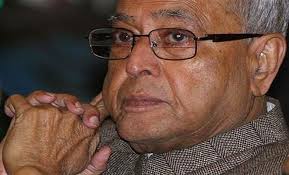
"I cannot comment on the views of the opposition. Whoever wanted to seek appointment with me, I gave them. BJP leaders met me, Aam Aadmi Party met me. I received various representations (against the ordinance)," he told reporters on board his special aircraft during the second leg of his visit to Belgium and Turkey.
"I had a discussion with the Prime Minister and what transpired every one of you knows. Cabinet is the mother of the ordinance," he said, adding that the Cabinet, in its wisdom, decided to withdraw the ordinance at its meeting on October 2.
"This is the fact. In between who is responsible, how responsible, to what extent responsible, these are speculations of individuals. I have nothing to do with it," he said.
BJP leader Advani yesterday credited the President for the withdrawal of the ordinance and slammed Rahul Gandhi for "rubbing off the authority" of the Prime Minister and the UPA with his strong words.
"The victory that has come to the country by withdrawal of this illegal and immoral ordinance has thus been thanks only to the Rashtrapati, who has proved that UPA would err seriously if it assumed that like most other Congressmen who had earlier occupied the high office of President, he too would remain a rubber stamp President," Advani said in a post on his blog.
Mukherjee also laughed away Belgian King Philippe's description of him as a "consensus builder in India" and said there was "nothing to read in between" the remark.
"What King Philippe meant was my (earlier) role in being the leader of the coalition in the House (Lok Sabha) and nothing more than that," he said when he was asked if the monarch's words referred to the role he might play after the 2014 general election.
Mukherjee today reached Turkey, the second leg of his tour, after a four-day visit to Belgium where he attended a host of state events and held talks with top leaders.
Mukherjee lauded Belgium for supporting India's efforts to secure civil nuclear cooperation.
"Belgium has certain specialisations. Belgium's cooperation (is) asserted by the fact that it was one of the first countries which extended its cooperation after India signed the civil nuclear agreement with the US," he said.
Belgium was also one of the first countries to extend cooperation when India sought a waiver from the Nuclear Suppliers Group to commence civilian nuclear trade, he noted.
"Therefore, it will be useful in cooperation in managing nuclear waste, which is a major problem for all nuclear power countries," he said.
Responding to a question on his bilateral meetings in Brussels, Mukherjee said terrorism was a subject that figured in his talks and was widely "condemned".
"You know all European countries are signatory to the United Nations resolutions and during our bilateral talks, they all condemned terrorism," he said.
The President will be in Turkey till October 7 to attend a host of events. He is going to the country on the invitation of his Turkish counterpart.
This is the third visit to Turkey by an Indian President, with the earlier ones being in 1993 and 1998.
India and Turkey share the common interest of ensuring peace and political stability in Afghanistan and Central Asia, officials said.





Comments
Add new comment